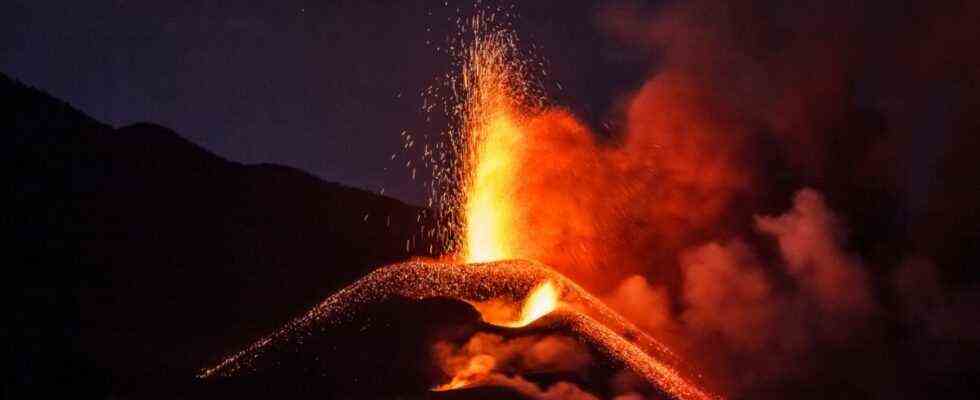It is rather unusual for a Catholic priest to believe in dragons. But Domingo Guerra knows what he’s talking about when he calls the volcano a “stubborn dragon”. The 79-year-old has already seen three volcanic eruptions on La Palma, one of them as a child while herding cows, and the youngest was by far the worst. Guerra is a pastor in the parish of Tajuya at the foot of the Cumbre Vieja ridge. For weeks the square in front of his church was populated by journalists, scientists and tourists, the view from there of the lava-spitting monster was simply perfect.
In the Spanish press, Guerra became the “pastor of the volcano”. And he not only offered help for those in need, but also his interpretation of the disaster in various radio, television and newspaper interviews. In the last one, a few days before Christmas, Guerra said that he sometimes thinks that the Lord is making the outbreak last so long this time because people have so little faith. Those who do not believe cannot hope for miracles either. But now, more than three months after the eruption began, La Palma still has its Christmas miracle: The volcanic eruption is considered over.
At the end of November it still looked like this at Cumbre Vieja. But can the palm trees really trust the peace and quiet?
(Photo: Emilio Morenatti / AP)
The good news reached the people on La Palma on December 25th: Julio Pérez, responsible for the security of the islanders at the regional government, officially gave the all-clear and spoke the redemptive words: “The eruption is over.” Since mid-December it became apparent that volcanic activity was slowly declining. But one was careful, because the last calm in October was followed by a particularly active phase in which the cone collapsed and particularly hot lava was released again. Even now, many people on La Palma do not yet trust peace. Who knows if the kite won’t wake up after all? For many, the results of the past three months are devastating. The lava buried 1676 buildings, including 1345 houses, 44 hotels and shops and 16 public buildings such as schools and gyms. About 7000 people on La Palma have lost their homes, many of them all of their belongings.
For the economy on the northwestern Canary Island, the outbreak was a slow-motion disaster. Banana farmers had to watch as the lava flows rolled over their fields at walking pace. Where bananas, vines or avocados used to be grown, the slowly cooling lava now lies meters high. 370 hectares of agricultural land fell victim to the volcano, in the Tazacorte region, which traditionally lives from banana cultivation, even 55 percent of the total cultivated area. So it’s no wonder that the people on La Palma are longingly waiting for the promised financial help from Madrid. But so far the Palmeros have felt little of the announced 400 million euros. The regional government estimates the damage caused at around 900 million euros, which is more than half of the island’s annual gross domestic product.
For some palm trees the glass is still half full. Some hope that now that the island has gained worldwide fame thanks to the volcano, tourists will also return. Preferably those who like to go hiking and enjoy nature. After all, less than ten percent of the island is under lava. And maybe after the volcanic tourism there will soon be tours to the newly created peninsula, which has grown where the lava poured into the sea. It is 44 hectares in size, just like the Vatican.
Until then, it is mainly scientists who are on site at the moment. The eruption is considered to be one of the best-documented outbreaks ever. Researchers from Germany, Portugal, France, Italy, even the USA and Canada had come to study directly on the spewing object how to better predict future volcanic eruptions. There is enough research to be done. Because although humanity sends space telescopes into space, it still knows very little about the interior of the planet on which it lives. Only that there are no dragons breathing fire is considered to be somewhat certain.

